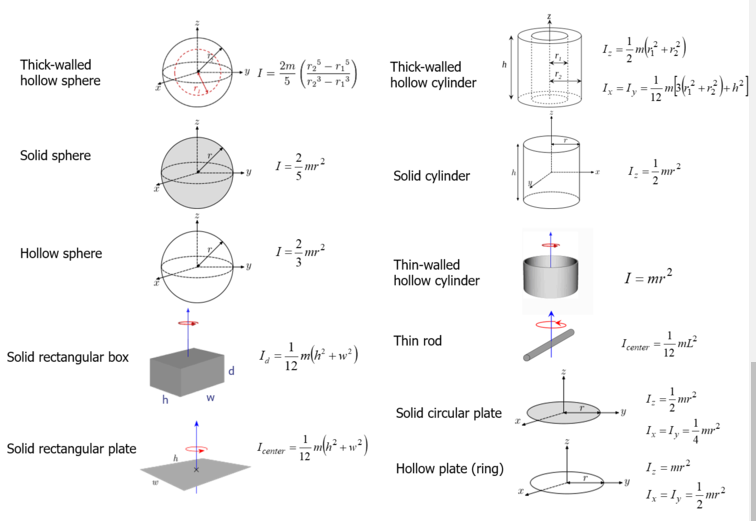Momentum - Center of Mass Theorem
The linear momentum of a system of particles is equal to the product of the total mass M of the system and the velocity of the center of mass.
Collisions
Inelastic: Momentum is conserved Elastic: Kinetic energy and momentum is conserved
On any path, a force constant in magnitude and direction will do the same amount of work
Equations
Linear Motion
Energy
Work (), as a function of distance () and force (), where is the angle between distance and force:
Linear kinetic energy, () as a function of mass () and velocity ():
Above, rewritten for velocity in terms of energy and mass:
Gravitational Potential energy, U, (J) in terms of mass, gravitational constant, and height
Only non conservative forces can change the total energy of an object or system:
Force in each direction is equal to the change in potential energy over the change in position in that direction:
The disassociation energy of a system is it’s final potential energy less it’s origin potential energy:
Momentum
= momentum in = mass in kg = velocity in m/s
Impulse (newton seconds) = = impulse in = force in N
Angular Motion
Moments of Inertia
 Parallel Axis Theorum: (when things are rotating not about their center)
Parallel Axis Theorum: (when things are rotating not about their center)
The moment of inertia of a thing not rotating about it’s center is equal to it’s moment of inertia about it’s center plus it’s moment of inertia as if it were a particle
Finding Torque
Radius and tangential component of force:
Lever arm (perpendicular distance between line of force and rotation center) and Force:
Vector cross product of torque and point of action:
Energy
Rotational kinetic energy, (J) in terms of angular velocity, , (rad/s ) and moment of inertia, ( but not ):
Torque as a function of angular acceleration () and moment of inertia:
Momentum
Angular momentum (L) as a function of moment of inertia and angular velocity
Torque is the change in angular momentum:
Precession
Angular velocity of precession is magnitude of torque on gyroscope over angular momentum of gyroscope